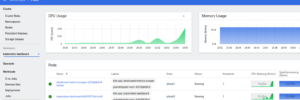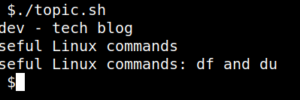
This post describes how to expose the kubernetes dashboard deployed in a k3s cluster via the default Traefik ingress controller. The way described here keeps the https setup for the kubernetes dashboard in the backend.

This post describes how to expose the kubernetes dashboard deployed in a k3s cluster via the default Traefik ingress controller. The way described here keeps the https setup for the kubernetes dashboard in the backend.
Pure bash bible (copied from dylanaraps@github), see original: https://github.com/dylanaraps/pure-bash-bible
This post explains how to fix OpenAI API error: “Error Code 429 – You exceeded your current quota. Please check your plan and billing details.”.
This post describes how to build your own voice assistant based on openai api. The assistant is build with python and uses python libraries for speech to text and text to speech conversion. Additionally the script contains some special commands for activation, deactivation and test mode.
This post describes how to setup a local docker registry within your network and use it for your projects. This is a precondition if you want to deploy and run your own projects on your own kubernetes cluster and do not want to expose everything to the public.
This post describes how to add specific security headers to your apache2 or nginx webservers. This eliminates some client side attack vectors in the client browsers which are using your site. Additionally this makes your site more trustworthy which can have an influence on your search engine score.
This post describes how to setup a git repository and shows the basic commands for daily work. The post will be extended over time with additional commands and tricks.
This post shows a way how to execute scripts in all sub directories via a script. There are many use cases for this, I use it to automate stop/build/start of arbitrary docker containers on one of my servers. In this way I can setup automated server maintenance jobs (e.g. via jenkins) and startup everything without knowing what is deployed on the server.
This post describes how to run a java application inside a docker container. I use a spring boot app with tomcat as an example but it would also work with other executable jar files. I use docker-compose for container configuration. With a new maven profile the application is build and deployed to be started as container.

This post describes how to use the Linux commands df (disk free) and du (disk usage) which show details about the free space on mounted drives as well as usage details. This is useful in many situations, especially when you are fighting against space problems on a server.
Thanks! I’ve been searching for information on this topic, and your blog is the best I’ve come across. I’m looking…
Hi! I noticed you visited my site, so I'm returning the favor. I’m looking for ideas to improve my own…
good!!!